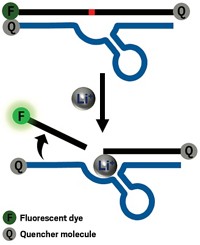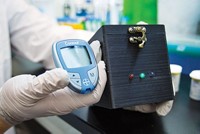Advertisement
Grab your lab coat. Let's get started
Welcome!
Welcome!
Create an account below to get 6 C&EN articles per month, receive newsletters and more - all free.
It seems this is your first time logging in online. Please enter the following information to continue.
As an ACS member you automatically get access to this site. All we need is few more details to create your reading experience.
Not you? Sign in with a different account.
Not you? Sign in with a different account.
ERROR 1
ERROR 1
ERROR 2
ERROR 2
ERROR 2
ERROR 2
ERROR 2
Password and Confirm password must match.
If you have an ACS member number, please enter it here so we can link this account to your membership. (optional)
ERROR 2
ACS values your privacy. By submitting your information, you are gaining access to C&EN and subscribing to our weekly newsletter. We use the information you provide to make your reading experience better, and we will never sell your data to third party members.
Biochemistry
Aptamer-based lactate sensor can monitor metabolism
Fluorescent readout triggered when DNA aptamer binds the small metabolite
by Laurel Oldach
January 27, 2023

When organisms break down glucose in low-oxygen environments, the end product is lactate. Most ways to measure this metabolite—to monitor athletic performance or diagnose diseases, for example—depend on enzymes. Now, researchers report a DNA aptamer that can bind L-lactate at physiological levels (Angew. Chem., Intl. Ed. 2023, DOI: 10.1002/anie.202212879).
Detection based on DNA aptamers, short sequences with a stem-loop structure that can bind other molecules, tends to be more temperature stable and reversible than enzymatic methods. A team led by Juewen Liu of the University of Waterloo developed an aptamer that binds to L-lactate when magnesium is present. According to Liu, the Mg2+ ions may form a bridge between the negatively charged DNA and the small, negatively charged lactate molecule. The researchers then turned the aptamer into a fluorescent sensor whose ability to detect a large range of lactate levels compares well with commercially available assays. The sensor works on blood serum and can be combined with a previously published glucose aptamer to track metabolic activity.





Join the conversation
Contact the reporter
Submit a Letter to the Editor for publication
Engage with us on Twitter